|
|||||||||||||||||||||
|
|||||||||||||||||||||
|
|
|||||||||||||||||||||
|
|||||||||||||||||||||
|
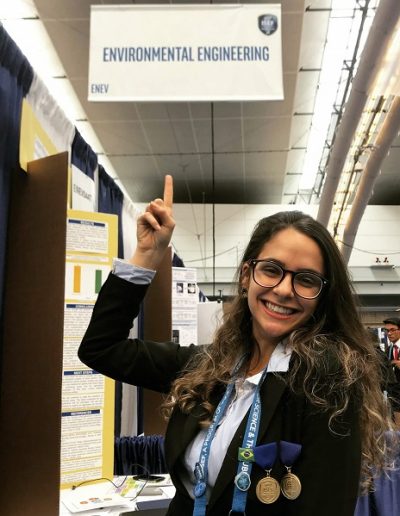
When she was little, Juliana Davoglio Estradioto dreamed of being a singer. Today, at age 18, she has other projects: she will pursue a scientific career. A career she has actually begun. When she was 15, Juliana first came across a scientific article and visited a research laboratory. From that moment, in just three years, she has won dozens of awards in competitions and science fairs (local, regional, national and international) for high school students. Among these distinctions, perhaps the most glamorous one is the one that in December of this year will take her to spend a week in Sweden alongside 24 other young researchers from around the world to attend the 2019 Nobel Prizes ceremony and celebrations in the company of laureates, besides visiting institutions and companies in Sweden and presenting her work to Swedish students.
Juliana was born and raised in Osório, a city of 40 thousand inhabitants, located 100 km from Porto Alegre, in the south of Brazil, surrounded by lakes, mountains and sea. There, in 2015, after finishing primary education in a public school, she enrolled at the Federal Institute of Education, Science and Technology of Rio Grande do Sul (IFRS) – Campus Osório, which had been inaugurated five years earlier, to attend the Technical Course in Administration (secondary education). Created by a law sanctioned in 2008, the Federal Institutes (IFs) are public and free institutions, linked to the Brazilian federal government, that specialize in the provision of professional and technological education from high school to postgraduate level. Extension and research activities are part of the FIs proposal for all levels.
In her first year at IFRS, Juliana was enthusiastic about an extension project aimed at the community of family farmers in the region, with social and environmental bias, coordinated by Professor Flávia Santos Twardowski Pinto. First as a volunteer and later with an IFRS scholarship, Juliana participated in three projects involving research and development over the three years of high school, always guided by Professor Twardowski.
Juliana’s first work resulted not only in the development of biodegradable plastic made from agricultural waste available in the region (passion fruit peel), but also in the creation of an application for this material: a packet for seedlings that does not need to be removed prior to planting. Juliana received several honors for this work, such as 4th place in Environmental Engineering at the largest science competition in the world for high school students, the Intel International Science and Engineering Fair (Intel ISEF) held in Los Angeles (USA) in May of 2017. Another important international recognition was the gold medal obtained at Genius Olympiad, a competition for high school projects addressing environmental problems and their solutions, held in Oswego, USA, in June 2018. At the national level, the main distinction Juliana received was for the work of plastic made of passion fruit– first place in the High School category in the 29th edition of the Young Scientist Award, granted by the National Council for Scientific and Technological Development (CNPq) and partner entities in a ceremony in December of last year, with the presence of the President of the Republic and several other governmental authorities.
At the end of last year, when Juliana graduated from high school in IFRS, she already had a concrete possibility for her undergraduate studies: a scholarship to study at the University of Arizona (USA), received as a prize at Intel ISEF in 2018, for a work she developed on adsorbent materials from agroindustrial residues for the removal of dyes in aqueous suspension. Now, she has at least one more option, since she was approved in the entrance exam for the course of Chemical Engineering of the Brazilian Federal University of Rio Grande do Sul (UFRGS). Will she stay in her homeland? Whatever the decision, the girl’s background makes you think she will be able to take advantage of the opportunities.
See our interview with Juliana.
B-MRS Newsletter: You have just finished High School integrated to Technical Administration. When you enrolled in the course, did you plan to work in the administration area? What led you to participate in scientific research projects?
Juliana Davoglio Estradioto: In order to enter the IFRS – Osório campus, you have to participate in a selective process, and before the process I had to choose between Administration and Informatics. It was very difficult to make that decision at age 14 and I ended up choosing Administration. I never imagined I would do research, much less that it would be on topics so different from what I had seen in the classroom. I find Administration a very important area, but I do not see myself working in the area; now that I am a Technician in Administration, I ended up falling in love with research!
As soon as I joined the course I became very interested in a rural extension project because my family is really involved with the area of agronomy. The coordinator was Professor Flavia and I had to undergo a selection process to enter the project. I remember the 14-year-old teenager who was dying of anxiety, but very excited about being able to do something different from the theoretical classes, since FIs offer a number of opportunities. Soon after, I was being mentored by Professor Flavia and admiring the work she does.
B-MRS Newsletter: Complementing the previous question, how / when did the desire to become a scientist come about? Was participation in the competitions important in this process?
Juliana Davoglio Estradioto: When I was a kid I liked to climb trees, observe insects and stay in touch with nature. However, throughout childhood we learn to be more restrained and our investigative spirit diminishes. So I never had the urge to be a scientist even though I was curious when I was a child. My childhood dream was to be a singer! And so I say that science chose me and not the other way around. I never imagined that it was going to be something I would be so passionate about. When I joined the Federal Institute, I got involved in projects and had a teacher who really encouraged me to follow in that area. Contact with science helped me face a difficult personal moment, made me want to be a better, more determined person, and determined as a scientist. Participation in science fairs was more important in my personal construction and helped in developing my communicative skills and empathy, while interaction in the laboratory and the willingness to do research showed me that I want to do this for the rest of my life.
B-MRS Newsletter: On the development of biodegradable plastic from passion fruit waste, briefly tell us the path taken, from idea to material and application. Have you consulted many scientific articles? Have you exchanged ideas with other researchers? Which labs did you use?
Juliana Davoglio Estradioto: The project of biodegradable plastic from the peel of passion fruit arose from a problem I had observed in my region from the rural extension project I participated in the first year of high school: that the fruit processing industry generates waste, seeing that in the passion fruit the residues correspond to 70% of the fruit. I wanted to bring a use to that peel and Professor Flavia was instrumental in motivating and stimulating me to go after a solution. We talked about ideas for the use of the peel and then I discovered what scientific articles were. It was a frightening because I was 15 years old and had not had any contact with articles until then. Articles are a more academic means of communication and I had to figure out a lot of things before I could read them because my high school classes were basic and management-oriented. I had to learn a lot about Chemistry and Biology before I could understand the articles, I talked to other researchers and consulted my advisor. In the middle of the project development (when it was all going wrong ahahahaha), we found by coincidence that my advisor’s first teacher, Simone Hickmann Flôres, was working with biodegradable plastic films. So, it was possible to use some laboratories from the Institute of Food Science and Technology of the Brazilian Federal University of Rio Grande do Sul to make more complex analyses, while I continued to do the research in the baking laboratory of the Osório campus (the only one available at that time). When I had good plastic samples, I began to question myself about the application I could give the material. And that’s when I remembered the visits to the farmers, where I had seen seedlings wrapped in black plastic (low-density polyethylene). I wanted to replace this material with my biodegradable plastic and it was quite difficult until I got to a packaging for seedlings. The coolest thing of this application is that the packaging can be planted together with the seedling, avoiding waste generation.
B-MRS Newsletter: In 2018 you started working on another project related to the development of a material from agricultural waste, also coordinated by Professor Flavia. Could you summarize what this work is about and its development status?
Juliana Davoglio Estradioto: The project began from the demand of one of the largest agro-exporters of macadamia nut here in Brazil, and nut is on the rise in the world market. Processing the fruit to obtain the nut that is marketed generates an agroindustrial residue which is the macadamia nut bark. This bark is normally intended for landfills or for the combustion and production of energy. What I wanted to do was a biotechnological application, so my hypothesis was whether it would be possible to use the agroindustrial residue of macadamia nut in the synthesis of a polymeric biomembrane. The project is still being developed and improved, I have already been able to prove my hypothesis in a positive way and I am looking to improve the appearance of biomembranes.
B-MRS Newsletter: To what factors and competencies do you attribute the success your work has had in national and international awards?
Juliana Davoglio Estradioto: I believe that my life would be completely different if I had not studied at the Federal Institute of Rio Grande do Sul, because it provides several opportunities that unfortunately are not yet offered in other elementary schools. Being a student of IF and guided by Professor Flavia made my view on education and science to change, I am very grateful for understanding the transformative role they have played in my life and in many other Brazilian realities.
B-MRS Newsletter: Your career in scientific research began with a lot of attention. What are your plans, from a professional point of view, for the next few years or the next decades of your life?
Juliana Davoglio Estradioto: I intend to continue researching in the areas that I am passionate about and to be a scientist, I really like the natural sciences and I believe I will never be able to abandon it. I want to work on themes that focus primarily on sustainability, because we need to find alternatives for the impacts we are causing on all ecosystems. However, besides being a researcher, I intend to work with education and scientific dissemination.
B-MRS Newsletter: When googleing your name, one can guess your life has changed a lot recently. There are many interviews in all types of media, travels, presentations, awards, formalities, congratulations from politicians and admirers … How do you deal with this change?
Juliana Davoglio Estradioto: It is a very positive change and it represents a lot to me at this moment, because I feel responsible for the dissemination of girls doing research in high school. These are activities that give me pleasure and believe we need to encourage other young people so that they see the scientific career as a possibility and an opportunity.
|
||||||||||||||||
|
||||||||||||||||
|
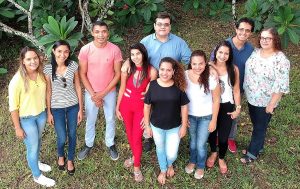
The University Chapters (UCs) program of B-MRS begins 2019 with a new member, the UC of the Brazilian Federal University of Pernambuco (UFPE). With the creation of this unit, the program will have nine UCs distributed in the south, southeast, northeast and north of the country.
The interdisciplinary team of the new UC brings together 15 students (three undergraduate, five masters and seven doctoral students) from courses in Chemistry, Biological Sciences and Materials Science at UFPE. The tutor of the unit is Professor Petrus d’Amorim Santa Cruz Oliveira.
“What motivated us to create our UC was the need to explore the world of Materials Science, reinventing new ways to broaden and bring people from all parts, thus diversifying and strengthening our education more and more,” says Karolyne Santos da Silva, president of the UC. “Our highest expectation is to awaken young people to science, showing that there are possibilities to be innovative and have the opportunity to undergo new experiences with other researchers,” adds the doctoral student in Materials Science.
In the context of B-MRS’s UCs program, the team initially plans to hold a series of events: a holiday course, the 1st Meeting of Materials Science and Engineering of Pernambuco and annual workshops.
Get to know B-MRS’s UCs Program and the nine units it has so far in the states of Minas Gerais, Pará, Pernambuco, Piauí, Rio Grande do Sul and São Paulo: https://www.sbpmat.org.br/en/university-chapters/
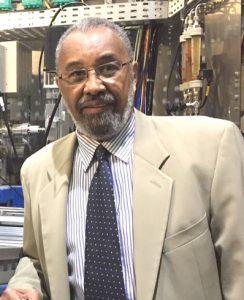
Professor Oswaldo Luiz Alves (IQ – UNICAMP), a member of B-MRS, was awarded the title of Professor Honoris Causa of the Federal University of Ceará (UFC). The title was granted by the University Council of the institution on December 17, 2018. In addition to being a full professor of UNICAMP, Alves has been a collaborating professor of the Graduate Program in Physics of UFC for more than 30 years.
In October 2018, Professor Alves received another important distinction, the admission to the Brazilian National Order of Scientific Merit in the Grand Cross class.
|
||||||||||||||||||||||
|
||||||||||||||||||||||
|
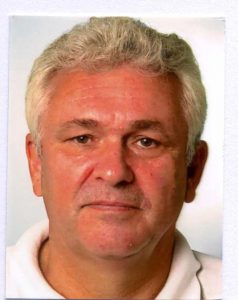
In the late 1970s, when he was a doctoral student, German scientist Heinz von Seggern came to Brazil for the first time and met some local researchers with whom he still collaborates. His host was Bernhard Gross, another German scientist who settled in Brazil and is considered a pioneer of materials research in the country. This was the beginning of a series of scientific visits of Heinz von Seggern to Brazil, which included the participation in five B-MRS Meetings, the annual events of the Brazilian Materials Research Society. In the last edition of the event, Prof. Heinz von Seggern gave a plenary lecture on ferroelectrets.
Heinz von Seggern graduated in physics from the University of Hannover (Germany) in 1976. He received his PhD degree in electrical engineering from the Technical University of Darmstadt (Germany) in 1979. His thesis advisor was Prof. Gerhard Sessler, one of the inventors of the electret microphone, the most common type of microphone in use today. After that, Heinz von Seggern became a postdoc and then a principal investigator at AT&T Bell Laboratories (USA). From 1985 to 1997 he worked at Siemens research center in Erlangen (Germany), starting as a principal investigator and then being promoted to department head. Since 1997, he is Full Professor at the Technical University of Darmstadt, where he leads the Electronic Materials Group.
Throughout four decades of scientific research, Heinz von Seggern has made important contributions to the field of materials in understanding fundamental phenomena, developing analysis techniques and applications, and inventing devices. He has published over 280 scientific papers in peer-reviewed journals with more than 7.800 citations, and his h-index is 46 (Google Scholar).
See our interview with this scientist.
B-MRS Newsletter: – What motivated you to become a scientist and, particularly, a materials scientist?
Heinz von Seggern: – Already as a high school student my main interest was directed towards natural science. This passion was strongly motivated by one of my teachers who really understood to ignite my love for this field. So it was a natural thing for me to study physics, however, I always kept in touch with mathematics and chemistry. After finishing my diploma in physics at the Technical University of Hannover, I started my PhD work at the Technical University of Darmstadt in the electrical engineering department and two and a half years later I received my doctoral degree in electrical engineering. The following four out of five years I spend at Bell Laboratories in Murray Hill, New Jersey, USA whose fabulous working conditions made my bonds to science even stronger. My path to materials science started with my return to the Corporate Research Laboratories of Siemens AG in Erlangen where I spend 12 years before being appointed as full professor at the Technical University of Darmstadt, Germany. In the time at Siemens my work was focused on more practical aspects of science which I started to be increasingly interested in. The ability to change and adapt material properties to practical demands, which is the basic task of materials science, fascinated me more and more.
B-MRS Newsletter: – In your opinion, what are your main contributions to the materials field? Please, select a couple of discoveries/developments, describe them briefly, describe the context in which they were developed, and share the papers or patents references.
Heinz von Seggern: – Since I have been working on different subjects it is not so easy to point out my or our major contributions to the materials field. I will concentrate on one discovery or development in each field. Let’s start with my PhD study. My task was to understand the charge transport and electronic trap structure of Teflon FEP thin films to back up the lifetime expectation of electret microphones. I discovered by means of thermally stimulated discharge measurements that Teflon FEP contains two different types of energetically deep electron traps which are located near the surface and in the bulk of the films, respectively. This discovery was made possible by comparing TSD results of corona and electron beam charged samples whereby corona charging leads to filling of traps close to the surface and electron-beam charging allowed for deposition of charge into surface and bulk traps dependent on the utilized electron energy. From this finding a charge transport model was developed depending on the initial location of the electrons after charging. The model is based on trapping and thermally induced release. In case of corona charging the transport is initiated by a thermally induced release of electrons from surface traps and a subsequent capture and release by deeper bulk traps [Ref: H. von Seggern, J. Appl. Phys. 50, 7039 (1979), Heinz von Seggern, J. Appl. Phys. 50, 2817 (1979)]. The morphological reason for the different trap depth of surface and bulk can be seen in the film production process where different cooling rates apply to the surface and the bulk of the films.
After finishing my PhD degree I continued this research at Bell Laboratories investigating the transport of positive charges. In contrast to the electron traps, hole traps are relatively shallow and are distributed through the complete film. Once filled they empty relatively fast already at room temperature. On the other hand the number to energetically deep traps was found to be rather small resulting in a low capture rate. This implies that holes have a high probability to penetrate the film via hopping through shallow traps without being captured by deep traps which implies a rather low charge stability of Teflon FEP for holes. We were able to show that this problem can be circumvented by charging at high temperatures filling only deep traps [H. von Seggern, J. West, J. Appl. Phys. 55, 2754 (1984)]. This charge stabilization for positive charges recently became important with respect to so called piezoelectrets where by symmetry breaking a novel piezoelectric material was generated utilizing only nonpolar components. For these devices the stability of both charge types is essential.
During my time at the Corporate Research Labs of Siemens AG in Erlangen the field of interest changed to x-ray storage phosphors which are currently applied in so called image plates used commercially in x-ray diagnostics. The image plate thereby combines the classically utilized silver halide film and the intensifying screen where latter was applied to convert incoming x-rays to visible photons which are then detected by the photographic silver halide film. The working principle of the image plate is that by x-ray exposure electrons and holes are generated and trapped as F-centers and Vk-centers, respectively. Readout occurs by photostimulation of the electron and radiative recombination with the Vk-center. The released energy is then converted to a rare earth ion which emits light at its characteristic wavelength. Thereby the intensity of the emitted photons is indicative for the locally absorbed x-ray dose. My major contribution to this field was the discovery of the basic working principle of these photostimulable phosphors and the existence of spatially correlated and uncorrelated PSL centers which allowed for a deeper insight into the physics of storage phosphors [H. von Seggern et al., J. Appl. Phys. 64, 1405 (1988)]. Another contribution was the invention of neutron image plates fabricated by mixing an effective neutron absorber to the granular storage phosphor particles [T. Bücherl, H. von Seggern et al., Nucl. Instr. Meth. A333, 502 (1993)]. This technique is still widely used in neutron image detection.
After accepting the position as full professor in Materials Science at the Technische Universität Darmstadt I concentrated my efforts on the field of Organic Electronics which I already started at Siemens some years before. In the first years we focused on the energetic trap distribution of organic semiconductors. We were the first to experimentally prove the existence of a Gaussian trap distribution predicted earlier by Bässler et al. through Monte Carlo simulation. The experimental method used a refined thermally stimulated discharge technique known as fractional discharge, where a stepwise increase in temperature combined with the corresponding thermal release of charge allows one to determine the trap distribution which up to now is the only technique known to directly determine the distribution of traps [N. von Malm et al., J. Appl. Phys. 89, 5559 (2001); R. Schmechel et al., Phys. Stat. Sol. (a) 201, 1215 (2004)].The largest scientific attention we received, however, for the invention of the organic light emitting transistor (OFET) based on tetracene and a polyfluorene derivative. In such OFETs it was shown to be possible to obtain ambipolar transport by injection of electrons and holes from source and drain, respectively [A. Hepp, H.von Seggern et al., Phys. Rev. Let. 157406, 1 (2003); M. Ahles, H. von Seggern et al., Appl. Phys. Let. 84, 428 (2004)]. It was also shown that the same ambipolar transport can be used to construct colour tunable OFETs [E. J. Feldmeier, H. von Seggern et al., Adv. Mater 22, 3568 (2010)] where the motion of the emissive recombination zone through the transistor channel is used to excite different overlaying organic semiconductors with different emission wavelength.
In the last years at TU Darmstadt I have revisited charge storage in organic polymers known as ferro- or piezoelectrets. The cellular polymer polypropylene has shown by Finnish scientists to exhibit large piezoelectric d33 coefficients after poling by high electric fields with the only disadvantage that the trapped charge turned out to be thermally unstable. Therefore structures changed quickly to Teflon based sandwiches of solid FEP /ePTFE/ solid FEP, where ePTFE is a highly porous PTFE consisting of up to 98% air, and later to completely air filled structures. My contribution to that field is the physics explaining the hysteresis and thereof the deduction of the maximal stable polarization which then allows for the theoretical deduction of the piezoelectric d33 coefficient for plane-parallel structures. This knowledge allows for the optimization of the piezoelectric effect and therewith increases the potential for future applications [S. Zhukov, H. von Seggern et al., J. Appl. Phys. 102, 044109 (2007); S. Zhukov, H. von Seggern et al., Scientific reports 8, 4597 (2018)].
B-MRS Newsletter: – Please make a brief story of your interaction with Brazil and with Prof Bernhard Gross.
Heinz von Seggern: – During my PhD work at TU Darmstadt Prof. Gross was a frequent guest of Prof. G.M. Sessler, my thesis adviser. Before my final PhD defense he invited me to visit the Institute of Physics of the University of Sao Paulo (USP) in Sao Carlos. Here I met all the people with whom I am still in contact and friendship with, namely Roberto M. Faria and Jose A. Giacometti who in the meantime have become established professors at USP. After finishing my PhD study I went to Bell Laboratories, Murray Hill, NJ. where Profs. Gross and Sessler were welcomed guest almost every year. The collaboration was extremely fruitful and resulted in a number of joint publications. In 1984 I then left Bell Labs and started to work at Siemens Corporate Research on different topics for the next 12 years and naturally the collaboration was at rest. But as soon as I became appointed Professor at TU Darmstadt I revitalized my connection to the Institute of Physics of Sao Carlos, whose polymer group is now called Grupo de Polimeros “Prof. Bernhard Gross”. From that year on I visited initially Prof. Giacometti and later Prof. Faria almost yearly for up to two month financed generously by FAPESP through various programs. These stays were always very enjoyable and busy, and quite a few publications have resulted.
B-MRS Newsletter: – How many times did you attend the B-MRS Meetings? Do you remember when was the first time?
Heinz von Seggern: – In total I have attended five Brazilian MRS meetings starting in Natal 2007, Florianopolis 2012, Joan Pessoa 2014, Rio de Janeiro 2015 and again Natal in 2017. My first stay in Natal 2007 I remember especially since I was allowed to present our work in front of a great audience on the recently discovered light emitting organic field effect transistor and, on a more personal note, I also remember the wonderful Caipirinha my wife and me were enjoying every evening during sunset at the ocean side.
B-MRS Newsletter: – You have about 40 years of strong experience as a researcher. Please leave a short message with some advice for the students and junior scientists of our community.
Heinz von Seggern: – In the context of scientific education Prof. Bernhard Gross once said to me: “For someone who knows nothing, everything is possible.” There is a lot of truth in these few words. We all tend to sometimes talk about things that seem to be obvious to us but in reality they are not. My advice therefore is, especially to young scientists, to always ask yourself whether you understand the physical and/or chemical grounds of your current research. If not I suggest to you to acquire the missing basics, which then allows you to select from “everything is possible” the physical meaningful trials. This will definitely help you to make the right decisions to continue your research in a meaningful way.
Prof. Yvonne Primerano Mascarenhas
Instituto de Física de São Carlos – USP
Plenary Lectures
Prof. Julia Greer
California Institute of Technology – USA
Title: Materials by Design: Three-Dimensional Nano-Architected Meta-Materials
Prof. Stefano Baroni
Scuola Internazionale Superiore di Studi Avanzati – Italy
Title: Multi scale simulation of the color optical properties of natural dyes in solution
Prof. Alan Taub
University of Michigan – USA
Title: Challenges in Processing of Materials to Reduce Weight of Structural Components
Prof. Norbert Koch
Humboldt-Universität zu Berlin – Germany
Title: Hybrid inorganic/organic semiconductor structures for opto-electronics
Prof. Mingzhong Wu
Colorado State University – USA
Title: Spin Transfer in Topological Insulator/Magnetic Insulator Bi-Layered Structures
Prof. Maurizio Prato
Università degli Studi di Trieste – Italy
Title: Multifunctional Hybrid Carbon Interfaces
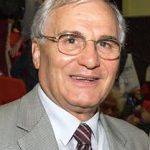
Prof Fernando Galembeck (UNICAMP, SP, Brazil) is one of the scientists distinguished with the III Scientists and Entrepreneurs of the Year Award by the Nanocell Institute. Galembeck was selected in the category “Professor,” in the area “Nanotechnology”.
Professor Galembeck, who has a broad history of research, development and innovation in materials, is a founding member of B-MRS and was highlighted this year by the society with the Memorial Lecture “Joaquim da Costa Ribeiro”.